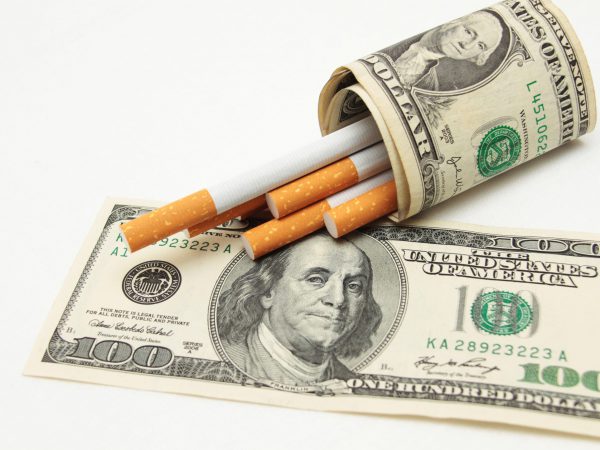Alex Cohen is the Director of Learning and Evaluation for the Richard M. Fairbanks Foundation.
Smokers, like all people, respond to incentives. One powerful incentive is price. When something becomes more expensive, people are less likely to consume that item.
This fact is borne out in the extensive literature on the impact of cigarette taxes on smoking: As prices rise through taxes, fewer people smoke. This happens by keeping non-smokers, including youth, from starting in the first place and by encouraging current smokers to quit.
But do increases in cigarette taxes in one state incentivize smokers (or tobacco retailers and wholesalers) to cross the border into neighboring states where cigarettes are cheaper?
The short answer is yes, but at fairly low level that has very limited effect on the significant and positive public health and economic benefits that result from higher cigarette taxes.
Studies from across the U.S. find evidence for cigarette tax evasion. But even with this evasion, states and cities that raise taxes on cigarettes consistently see larger reductions in smoking over time than similar areas that don’t raise taxes over the same time frame. These studies find that a 10 percent increase in cigarette taxes lowers smoking rates by 4 percent. The reduction in rates of smoking is greatest among our most vulnerable populations: youth, pregnant smokers and low-income smokers.
And tax evasion doesn’t erode impacts on revenue either. The last time Indiana increased its cigarette tax in 2007, for example, from 55.5 cents per pack to 99.5 cents per pack, cigarette tax revenue increased by $157 million in the following year, despite negligible increases in some nearby states. When Indiana raised its tax in 2002, more than tripling the tax from 15.5 cents to 55.5 cents, cigarette tax revenues rose $229 million. Evidence from across the U.S. over the past 15 years shows similar patterns.
The bottom line is that, even with some cross-border tobacco purchasing activity, raising the cigarette tax results in far fewer smokers, significantly lower taxpayer-funded healthcare costs, and higher state revenue. In fact, leading tobacco economists estimate that a $2 per pack tax increase in Indiana’s cigarette tax would encourage 70,100 adults to quit smoking and prevent 36,300 future smoking-caused deaths. In addition, state tax revenues would increase by more than $358 million in the first year alone. This revenue boost would be sustained over time and decline slowly as tobacco use falls.
For those concerned about cross-border purchases, there are approaches, such as the use of “high-tech tax stamps,” that are effective at limiting cigarette tax evasion. But even without such tools, the evidence is abundantly clear: Raising the tobacco tax is the most powerful tool to encourage existing smokers to quit and prevent young people from lighting up – and potentially becoming lifelong nicotine addicts. Any resulting cross-border sales are minimal and don’t diminish the powerful public health and economic benefits that result when cigarettes taxes are raised.
Tagged in: Alex Cohen, Richard M. Fairbanks Foundation, Tobacco Use



